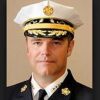Editor’s Note: Chief Adam K. Thiel examines how California officals are learning from the 2008 fire season, and how we can employ that strategy in our own districts.
While I am far from a wildland-firefighting expert, this article has several interesting points worth considering no matter where you work or what type of fires you commonly fight.
The first is the general value of lessons learned. While it’s hard to substitute first-hand experience, none of us can make it to every noteworthy incident in our departments or elsewhere.
This makes it all the more important that we, regardless of rank or position, constantly read, watch and learn from the experiences of our brother and sister firefighters across the country and around the globe. While it’s often said that every fire is unique, the knowledgeable people in this story are already recognizing similarities from the disastrous 2008 fire season and planning accordingly.
Which brings me to the second point: it’s never too early, or too late, to identify issues and make changes. One of the major challenges mentioned in this article is communications. How many of us can truly say that we have it all figured out in that critically important aspect of our mission?
In this case, the involved agencies have taken deliberate steps to strengthen their relationships and provide for effective liaison between participating organizations. Again, it’s a lesson for all of us.
Finally, the article mentions the value of technology, not as a replacement for the all-important human factor, but to help responders and support personnel — in this case meteorologists — do their jobs faster and more accurately. Despite the fiscal pressures so many of our departments are facing, technology transfer from military and business applications still holds great promise for many future advancements in the fire and emergency services.
So stay safe and keep reading; you just might learn something.


